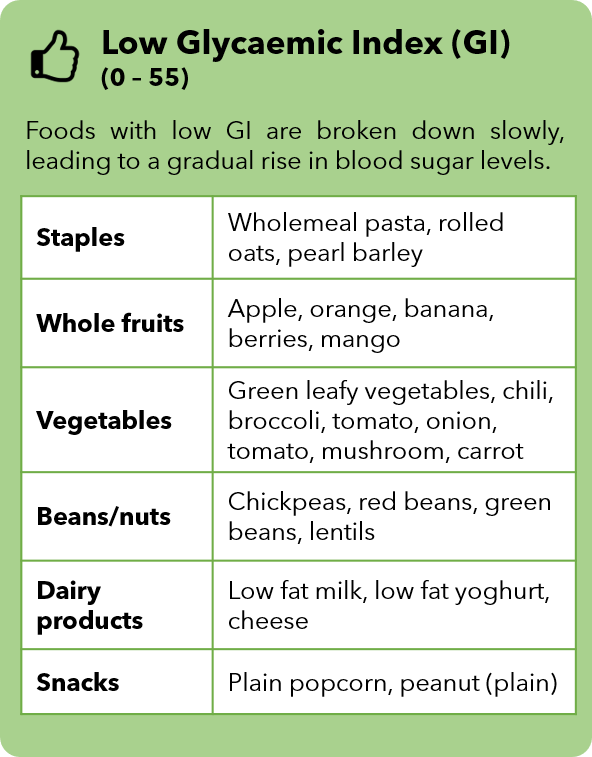Glycaemic Index
Different carbohydrates have different effects on blood sugar levels, depending on how quickly they are broken down.
The Glycaemic Index (GI) is a relative ranking of carbohydrates in foods based on how quickly they make your blood sugar levels rise. Foods are ranked on a scale of 0 to 100, with pure glucose (sugar) given a value of 100.
Carbohydrates with a low GI value (55 or less) are absorbed and broken down more slowly, resulting in a lower and slower rise in blood sugar levels.
What affects the GI of a food or meal?
Fat and fibre tend to lower the GI of a food
Cooking and processing increases the GI of a food
Pairing your carbohydrate source (e.g. rice) with a protein source (e.g. fish) lowers the GI of a meal
Below are examples of foods that have a low, medium and high GI.
Understanding the GI of food and drink can be helpful in predicting glucose fluctuation.
As much as possible, you should choose foods that have a lower GI for better blood sugar control.



